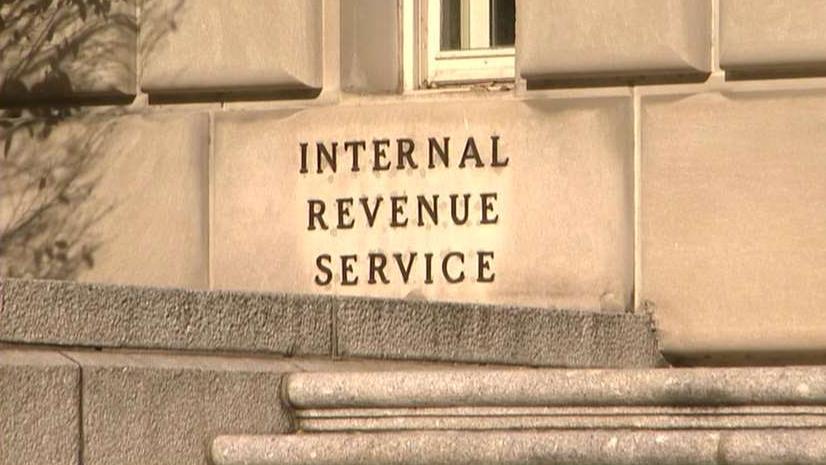Trump tax cuts and the middle class: Here are the facts
Ever since Congressional Republicans passed the Tax Cuts and Jobs Act (TCJA) in 2017, the left has sought to portray the tax cuts as a bad deal for the middle class.
Now that they have taken back Congress, Democrats on Capitol Hill are holding a hearing on Wednesday to “examine how the middle class is faring.” While they will undoubtedly use this hearing to score political points, the fact is the tax cuts have created unprecedented prosperity for the middle class in the form of higher wages, more take-home pay, more jobs and new employee benefits.
Rather than disputing these facts, Democrats argue that the bill was a “scam” for American families. They have seized on the news that the average tax refund is slightly down at the start of tax season as proof that the tax cuts have left families worse off. This criticism is misleading on various fronts.
For one, this data reflects a single week of tax filing season and it is likely that the size of refunds will increase as tax season continues – Morgan Stanley analysts have predicted that refunds will increase by 26 percent.
In addition, the size of a tax refund means nothing without also comparing the change in paychecks. In net, the overwhelming number of filers will be better off as an estimated 90 percent of Americans are seeing a tax cut.
TCJA wins
Despite this news, the success of the TCJA is clear. In the months following passage of the tax cuts, unemployment fell to a 49-year low and key demographics including women, African-Americans and Hispanics have seen record low unemployment rates.
Job openings have now hit a record high of 7.3 million and over 300,000 jobs were created last month, as most private-sector businesses continued hiring despite the government shutdown. Year-over-year, wages have grown 3.2 percent and the economy is projected to grow at 3.1 percent over 2018.
This positive news is not anecdotal.
According to Guy Berkebile, the owner of Pennsylvania-based small business Guy Chemical and one of the witnesses at the Ways and Means hearing, the bill has been a net positive for businesses.
“On the business expansion front, Guy Chemical was able to build a new laboratory that was five-times larger than our previous one, invest in new chemical compounding equipment and purchase new packaging line,” Berkebile told lawmakers on Wednesday.
Not only was this good for the businesses, it also benefited employees as noted in the testimony of Mr. Berkebile: “We were also able to pass down much of the financial savings to employees. More specifically, we were able to raise wages, expand bonuses by up to 50 percent, start a 401(k) retirement program and create 29 new jobs. These changes also instilled a sense of optimism among our staff, which has produced a less stressful and more enjoyable work environment.”
This is not an isolated story. Workers across the country have seen increased take-home pay, new or expanded education and adoption programs, and increased retirement benefits, while consumers are seeing lower utility bills.
More good news
To use a few examples, Firebird Bronze, an Oregon-based manufacturer was able to afford to give its nine employees health insurance for the first time while McDonald’s has used tax reform to allocate $1,500 in annual tuition assistance to every employee working more than 15 hours a week.
Visa has doubled its 401(k) employee contribution match to 10 percent of employee pay, while Anfinson Farm Store, a family-owned business in Cushing, Iowa (population 223) has given its employees a $1,000 bonus and raised wages by 5 percent.
In addition to these employee benefits, America’s middle class is seeing direct tax relief.
A family of four with annual income of $73,000 is seeing a 60 percent reduction in federal taxes -- totaling to more than $2,058. According to the Heritage Foundation, the typical American family will be almost $45,000 better off over the next decade because of higher take-home pay and a stronger economy.
Tax reform doubled the child tax credit from $1,000 to $2,000, giving over 22 million American families important tax relief. The standard deduction was doubled from $6,000 to $12,000 ($12,000 to $24,000 for a family) giving tax relief for over 105 million taxpayers that took the deduction prior to tax reform and simplifying the code for tens of millions Americans that will not take the standard deduction instead of itemizing.
While the rhetoric of the left has sought to portray the Republican tax cuts as a negative for the middle class, nothing could be further from the truth. The reality is, the middle class has seen strong tax reduction, higher take home pay, more jobs and more economic opportunity.
Alex Hendrie is director of tax policy at Americans for Tax Reform, a free market advocacy organization dedicated to lower taxes and limited government.

